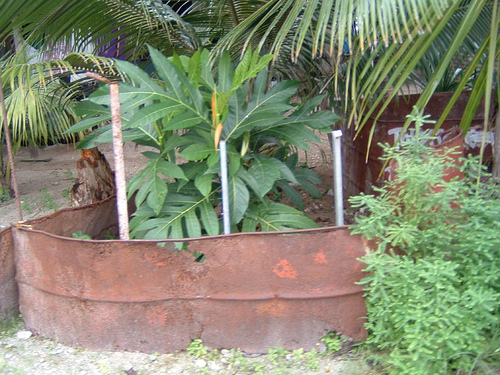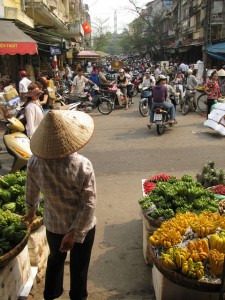The final paragraph of The Economist’s obituary of Mau Piailug, Pacific navigator and culture hero:
In 2007 the people of Hawaii gave him a present of a double-hulled canoe, the Alingano Maisu. Maisu means “ripe breadfruit blown from a tree in a storm”, which anyone may eat. The breadfruit was Mau’s favourite tree anyway: tall and light, with a twisty grain excellent for boat-building, sticky latex for caulking, and big starchy fruit which, fermented, made the ideal food for an ocean voyage. But maisu also referred to easy, communal sharing of something good: like the knowledge of how to sail for weeks out on the Pacific, without maps, going by the stars.
And like plant genetic resources, including breadfruit, perhaps. Anyway, a good word to know, maisu. Pacific people really take care of their breadfruit trees, incidentally. I took this photo in Kiribati a few years back.

 Speaking of weird fruits,
Speaking of weird fruits,